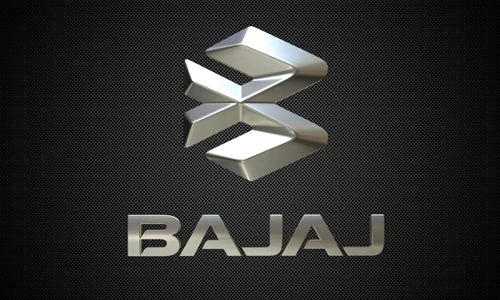Bajaj Auto, one of India’s oldest and most successful automotive companies, has established itself as a leader in the two-wheeler and three-wheeler segments, both domestically and internationally. Founded in 1945, Bajaj Auto has grown into a globally recognized brand with a presence in over 70 countries. Known for its popular brands like Pulsar, Dominar, and Chetak, Bajaj Auto has carved a niche in the motorcycle and scooter segments by focusing on innovation, affordability, and quality. Despite its strong position, Bajaj Auto faces challenges and opportunities in a dynamic industry shaped by changing consumer preferences, technological advancements, and regulatory pressures. This SWOT (Strengths, Weaknesses, Opportunities, Threats) analysis provides insights into Bajaj Auto’s current position and future outlook in India’s evolving automotive market.

Strengths
1. Strong Brand Portfolio and Market Leadership:
Bajaj Auto has a robust brand portfolio, with popular models such as Pulsar, Dominar, and Avenger in the premium motorcycle segment and Platina and CT100 in the entry-level segment. Bajaj’s focus on quality, reliability, and performance has helped it build a loyal customer base. The company’s well-recognized brands cater to various segments, from entry-level to premium motorcycles, making it a preferred choice among Indian consumers.
2. Significant Export Footprint and International Presence:
Bajaj Auto is one of India’s largest exporters of two-wheelers and three-wheelers, with a significant presence in over 70 countries, including markets in Latin America, Africa, and Southeast Asia. The company’s strong export footprint not only diversifies its revenue streams but also positions it as a globally competitive brand. Bajaj’s ability to adapt to local market preferences and offer affordable, quality products has made it a trusted name internationally.
3. Focus on Innovation and R&D:
Bajaj Auto has consistently invested in research and development to stay ahead of the competition. It has pioneered several innovations, such as the DTS-i (Digital Twin Spark Ignition) technology, which enhances engine efficiency and performance. Bajaj has also ventured into electric mobility with the launch of the Chetak electric scooter, showcasing its commitment to innovation and adapting to future mobility trends.
4. Strategic Alliances and Partnerships:
Bajaj Auto’s partnerships with global brands like KTM and Triumph have enhanced its market position in the premium motorcycle segment. These collaborations enable Bajaj to leverage international expertise, tap into new customer segments, and introduce cutting-edge products. The partnership with KTM has been particularly successful, helping Bajaj capture a significant share of the premium sports bike segment in India. Similarly, the Triumph collaboration is expected to strengthen Bajaj’s position in the mid-size motorcycle category.
Weaknesses
1. Limited Presence in Electric Vehicle (EV) Segment:
Despite the launch of the Chetak electric scooter, Bajaj Auto’s presence in the EV segment remains limited compared to other players like Ather Energy and Ola Electric, which have made significant strides in electric two-wheelers. Given the shift toward electric mobility, Bajaj’s limited EV portfolio may hinder its competitiveness in the long term, particularly as the government and consumers increasingly focus on eco-friendly alternatives.
2. Dependence on Two-Wheeler Segment:
A substantial portion of Bajaj Auto’s revenue comes from the two-wheeler segment, making it vulnerable to fluctuations in this market. While Bajaj has a strong three-wheeler business, the company’s reliance on two-wheelers means that any adverse changes in demand, consumer preferences, or regulatory policies can impact its profitability. Diversifying into other segments or strengthening its EV portfolio could reduce this dependency.
3. High Exposure to Emerging Markets:
While Bajaj Auto’s strong presence in emerging markets is a strength, it also exposes the company to risks such as currency volatility, political instability, and economic fluctuations in these regions. Many emerging markets are subject to economic uncertainties that can impact consumer demand for two-wheelers. The currency fluctuations in these markets can also affect Bajaj’s profitability, as a substantial portion of its revenue comes from exports.
4. Lack of Stronghold in the Scooter Segment:
The scooter segment in India is dominated by companies like Honda and TVS, with models like Honda Activa leading the market. While Bajaj Auto initially focused on scooters with iconic models like the Chetak, it later pivoted to motorcycles and currently has a limited presence in the high-growth scooter segment. As scooters become more popular due to their ease of use and suitability for urban commuting, Bajaj’s limited product range in this category may restrict its growth potential.
Opportunities
1. Growth Potential in the Electric Vehicle (EV) Market:
The Indian government’s push for electric mobility, along with rising environmental awareness among consumers, presents a significant opportunity for Bajaj Auto to expand its electric vehicle portfolio. By investing in EV research and launching new models, particularly in the two-wheeler segment, Bajaj can capture a share of the growing EV market. Expanding its Chetak brand and launching affordable, performance-oriented electric motorcycles could help Bajaj capitalize on the EV trend.
2. Expanding the Premium Motorcycle Segment:
The premium motorcycle segment is experiencing strong demand, driven by India’s growing middle class and a shift in consumer preference toward high-performance bikes. Bajaj’s partnership with KTM and Triumph positions it well to capture this demand. By introducing new models in the premium category and enhancing its branding efforts, Bajaj can strengthen its foothold in this lucrative segment.
3. Focus on Emerging Markets and Rural Expansion:
With rising disposable incomes and increasing urbanization in emerging markets, Bajaj Auto has the opportunity to deepen its presence in these regions by expanding its dealership and service network. The Indian government’s focus on rural development also presents an opportunity for Bajaj to grow in India’s rural areas. By offering affordable models and focusing on financing options, Bajaj can tap into the demand for two-wheelers in both emerging international markets and rural India.
4. Development of Innovative Financing Options:
Many consumers in India and emerging markets face financial constraints, which impact their purchasing power. Bajaj Auto can explore innovative financing options, such as micro-loans, installment payment plans, and tie-ups with non-banking financial companies (NBFCs) to make its products more accessible. Providing flexible financing can help Bajaj attract price-sensitive customers, particularly in rural areas, where affordability is a major factor in purchase decisions.
Threats
1. Intense Competition from Domestic and International Players:
The Indian two-wheeler market is highly competitive, with major players like Hero MotoCorp, Honda, and TVS Motors dominating various segments. Additionally, new entrants like Ola Electric and Ather Energy are disrupting the market with innovative EV offerings. This intense competition requires Bajaj to continuously innovate and invest in marketing, which can impact profitability. International brands entering the premium motorcycle space further add to the competitive pressure.
2. Regulatory and Environmental Pressures:
The automotive industry is subject to stringent regulatory standards, particularly related to emissions, safety, and fuel efficiency. In India, the transition to Bharat Stage VI (BS-VI) emission norms has increased manufacturing costs, impacting two-wheeler prices. Future regulatory changes aimed at reducing emissions may necessitate further investments in cleaner technologies, increasing operational costs. Compliance with evolving environmental norms is essential to avoid penalties and maintain consumer trust.
3. Economic Cycles and Impact on Consumer Spending:
Two-wheeler sales are highly sensitive to economic cycles and consumer spending patterns. Economic downturns, inflation, or unemployment can reduce discretionary spending, affecting the demand for motorcycles and scooters. Any economic slowdown in key markets, such as India and other emerging economies, could lead to reduced sales and impact Bajaj Auto’s financial performance.
4. Supply Chain Disruptions and Rising Raw Material Costs:
Bajaj Auto relies on a complex supply chain for components like metals, plastics, and electronic parts. Disruptions in the supply chain, as seen during the COVID-19 pandemic, can impact production timelines and increase costs. Additionally, rising raw material costs, particularly for steel and aluminum, can affect profit margins. Bajaj must implement strategies to manage these costs and ensure a resilient supply chain to maintain consistent production.
Future Outlook
Bajaj Auto’s future outlook is positive, driven by growth opportunities in electric mobility, premium motorcycles, and emerging markets. As India transitions toward electric mobility, Bajaj’s entry into the EV segment with the Chetak electric scooter positions it well to capitalize on this trend. However, to maintain long-term relevance, Bajaj must accelerate its EV strategy by developing new electric models and expanding the Chetak brand. A focused effort on electric motorcycles, particularly in the mid-to-premium segment, can help Bajaj capture a growing customer base interested in sustainable transportation.
The premium motorcycle market presents another growth avenue, where Bajaj’s collaboration with KTM and Triumph will play a crucial role. As demand for high-performance bikes increases, Bajaj’s premium offerings can attract young, affluent consumers seeking style, performance, and brand value. Expanding its dealership network and enhancing brand visibility in urban centers will be essential to capturing this segment.
In the domestic market, rural expansion is a key growth driver for Bajaj. With rising disposable incomes and increasing infrastructure in rural India, there is significant demand for affordable two-wheelers. By focusing on entry-level models and offering flexible financing options, Bajaj can expand its reach in these areas, increasing its market share.
However, Bajaj Auto must address its limited presence in the scooter segment, particularly as scooters become popular among urban consumers for daily commuting. Expanding its scooter portfolio with new models, including electric scooters, can help Bajaj tap into this high-growth segment and compete effectively against market leaders like Honda.
To stay competitive, Bajaj must also invest in digital transformation, supply chain resilience, and cost management. Enhancing its digital capabilities, such as online sales platforms and virtual showrooms, can improve customer engagement and meet the preferences of digitally-savvy consumers.
In conclusion, Bajaj Auto’s strong brand portfolio, international presence, and commitment to innovation provide a solid foundation for sustained growth. By leveraging opportunities in electric vehicles, premium motorcycles, and rural expansion, Bajaj can navigate challenges and continue its legacy as a leading two-wheeler manufacturer. With a strategic focus on product diversification, digital innovation, and customer-centricity, Bajaj Auto is well-positioned to capture growth in India’s dynamic automotive landscape.

